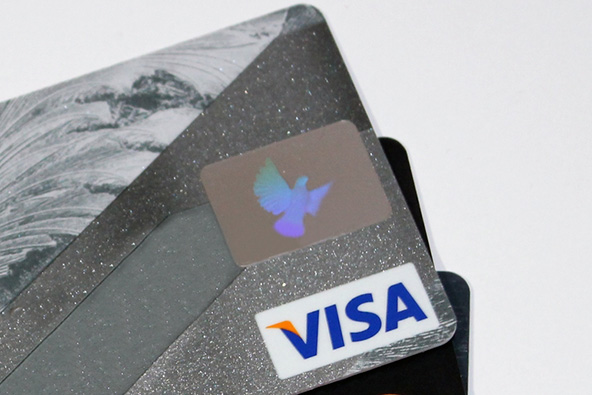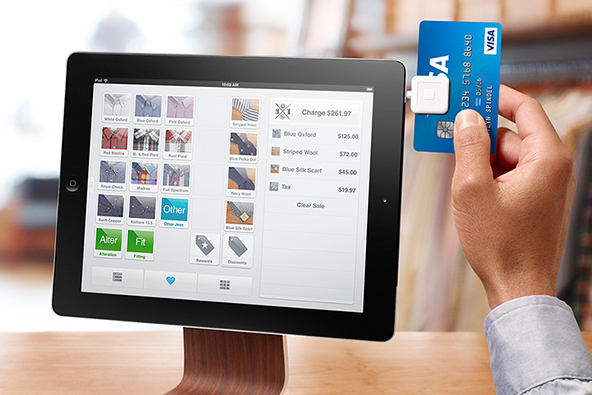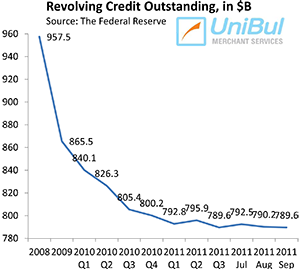How to Manage Chargebacks Resulting from Cancellations and Returns

Businesses which accept credit cards for payment are required to disclose their policies regarding order returns and refunds or service cancellation to the cardholder at the time of the transaction. Brick-and-mortar merchants should have their policies pre-printed or otherwise written on their sales receipts, while e-commerce businesses cannot even open a merchant account, if they don’t have these policies clearly disclosed on their websites and then they are also required to obtain each customer’s explicit consent, prior to taking her card payment.
And there is a good reason for these requirements. A failure to disclose your refund and return policies at the time of a transaction could result in a dispute should a customer later return the merchandise. And that dispute, in turn, can easily deteriorate into a chargeback, which is not something you should look forward to. Visa maintains three separate reason codes which fall into this chargeback category:
- Reason Code 41: Cancelled Recurring Transaction.
- Reason Code 53: Not as Described or Defective Merchandise.
- Reason Code 85: Credit Not Processed.
Today I will review the causes for each of these chargebacks and offer suggestions on what you can do to manage them and to prevent their future recurrences. Let’s get started.
Reason Code 41: Cancelled Recurring Transaction
This reason code is issued when the card issuer receives a claim by a cardholder that:
- The merchant was notified to cancel a recurring transaction or the cardholder’s account was closed but the merchant has since billed the customer.
- The transaction amount exceeds the pre-authorized dollar amount.
- The merchant was supposed to notify the cardholder prior to processing each recurring transaction, but has not done so.
1. Most common causes for Reason Code 41. This chargeback can have a number of immediate causes, including:
- The cardholder:
- Withdrew permission to charge the account.
- Cancelled a payment of a membership fee.
- Cancelled the card account.
- The card issuer:
- Charged back a previous recurring transaction.
- Cancelled the card account.
- The merchant:
- Received a notice before the transaction was processed that the cardholder’s account was closed.
- Exceeded the pre-authorized dollar amount range and did not notify the cardholder in writing within ten days prior to the transaction date.
- Notified the cardholder in writing within ten days of processing the recurring transaction, but cardholder did not agree to the charge.
2. Managing Reason Code 41 chargebacks. Your actions in response to such a chargeback will be determined by the particular circumstances, the most typical of which are described in the table below:
| If: | Then: |
| The transaction was cancelled and credit issued. | Inform your acquirer of the date that the credit was issued. |
| The transaction was cancelled, but credit has not yet been issued. | Accept the chargeback, but do not process a credit, as the chargeback has already done that. |
| The transaction was not cancelled. | This is the hardest one to accept, but if you don’t have a record proving that your customer did not cancel the transaction, you should simply accept the chargeback and move on. A cardholder is not required to provide evidence for the cancellation notice; a verbal notification is enough. |
| The transaction was cancelled, but services were used. | Provide a proof to your acquirer that the charge at issue was billed for services used by the customer between the date of her previous billing statement and the date she requested cancellation. |
| The cardholder renewed the recurring arrangement. | Inform your acquirer. Again, be advised that you need to provide a written record stating your customer’s agreement to renewing the recurring plan. |
| The recurring plan was cancelled, but a final payment is still due. | Contact your customer directly and request a payment. |
| The transaction amount is greater than the pre-authorized amount. | Your acquirer’s system should be able to identify such transactions and, when this occurs, you should notify your customers at least ten days in advance of processing the payment. If the customer disputes the amount after the billing, provide evidence of the notification to your processor. |
3. Preventing chargeback Reason Codes 41. Your objective should be dealing with the causes of Reason Code 41, rather than sorting out its consequences. Here is a short list of what you should be doing to prevent this type of chargebacks from occurring:
- Honor customer cancellation requests and get them processed quickly. Send a notification to your customer that her recurring payment plan was closed. If any amount is still owed up to the date of the cancellation, request a payment for it, but do not process a recurring one.
- Process credits promptly. When a cancellation request is received too late to prevent the most recent recurring charge from posting to your customer’s account, process the credit and notify the cardholder.
- Flag transactions which exceed pre-authorized amount ranges. Notify customers of this amount at least ten days in advance of processing the recurring transaction billing. If the customer disputes the amount after the billing, send evidence of the notification to your acquirer.
- Enroll in the Visa and MasterCard account updater services. These services keep the card account information you have on file for your customers current, which helps prevent authorization declines and chargebacks. For example, if a new card is issued to your customer, it will have a new expiration date. If the information is not updated and you attempt to process the transaction, it will be declined. As customers often forget to update their card information on file for recurring payments, these services would be doing the job for them. However, the updaters are typically available (and make sense) to larger merchants. Here is a representation of how the Visa Account Updater (VAU) works:

The most difficult thing to get over when it comes to Reason Code 41 is that sometimes you just have to accept them and move on, even though your customer is clearly trying to take advantage of the system. Yet, you should do just that. What you always have to keep in mind is that a cardholder does not need to show any proof that she cancelled a recurring transaction. She is only required to verbally request cancellation, in which case no paper trail can be kept. Nevertheless, you should keep a written record of all actions taken in regard to each recurring account to provide them to your acquirer when needed.
Reason Code 53: Not as Described or Defective Merchandise
This code is used when a cardholder states to her card issuer that the goods or services were:
- Received damaged or defective.
- Not the same as shown or described on the merchant’s website, on the transaction receipt or other documentation presented to the cardholder at the time of the transaction or not the same as the merchant’s verbal description (for telephone transactions).
- Unsuitable for the purpose in which they were sold.
For this reason code to be used, the cardholder must have made a valid attempt to resolve the dispute or return the merchandise, such as request that the merchant retrieve the goods at his own expense.
1. Most common causes for Reason Code 53. Reason Code 53 is issued when the merchant:
- Sent the wrong merchandise to the cardholder.
- Sent the merchandise, but it was damaged during shipment.
- Inaccurately described the merchandise or services.
- Did not cancel the services purchased by the cardholder.
- Did not perform the services as described.
- Did not accept the returned merchandise.
- Accepted the returned merchandise, but did not credit the cardholder’s account.
Keep in mind that your return policy has no bearing on disputes that fall under this reason code.
2. Managing Reason Code 53 chargebacks. Your actions in response to this reason code will depend on the particular circumstances, as follows:
| If: | Then: |
| The merchandise was returned or services were cancelled and a credit was processed. | Send evidence of the credit to the cardholder’s account to your acquirer. |
| You have not received the returned merchandise or the cardholder has not cancelled the service. | Inform your acquirer. Remember that for this chargeback to be valid, your customer must make a valid attempt to return the merchandise or cancel the service. |
| The dispute is valid and you received the returned merchandise, but have not yet issued a credit. | Accept the chargeback, but do not process a credit as the chargeback has already done this for you. |
| The merchandise was as described. | Provide your acquirer with specific information and invoices to refute your customer’s claim. |
| The merchandise was returned because it was damaged. | Provide your acquirer with evidence that the merchandise was repaired or replaced (if either was requested by the cardholder). |
| The cardholder cancelled the service but you have not yet credited her account. | Accept the chargeback, but do not process a credit as the chargeback has already done this. |
| The service was performed as described or before it was cancelled. | Provide your acquirer with specific information and documentation to refute your customer’s claims. Attempt to address each individual point the cardholder makes in her dispute. |
3. Preventing Reason Code 53. As always, you should try to prevent Reason Code 53 from occurring in the first place. Here is what you can do:
- Accurately describe your products and services. It sounds obvious, but it is not always done properly. Make sure that all descriptions in catalogs, on your website and on sales receipts, as well as in verbal communications are accurate, complete and not unintentionally misleading.
- Ship the correct merchandise. Another obvious advice, but you should regularly review your shipping and handling procedures to ensure that orders are being filled accurately.
- Train your staff on proper procedures for taking and fulfilling orders and review their performance on a regular basis.
Be advised that the chargeback amount is limited to the amount of the merchandise returned or services cancelled and it may also include shipping and handling fees, but it cannot exceed the original transaction amount.
If merchandise was returned, the card issuer is required to wait at least 15 calendar days from the date the cardholder returned the merchandise before initiating a chargeback (so that sufficient time is allowed for you to process a credit to your customer’s account). However, the issuer is not required to comply with the waiting period if that will cause the issuer to exceed their chargeback time frame.
You should be interpreting Reason Code 53 chargebacks as an indicator that you have not done a good enough job at either describing what you sell or do or in actually delivering it. Your first reaction to such a chargeback should be to identify its cause and then make adjustments in the way you describe or deliver your products or services, as needed. Also, make sure that you clearly communicate to your customers your willingness to work out any product- or service-related issues, so that, should they have a legitimate complaint, you would be notified before the card issuer, getting a chance to avoid a chargeback.
Reason Code 85: Credit Not Processed
This code is used when the card issuer receives a notice from a cardholder acknowledging participation in a transaction, for which merchandise was returned or services cancelled, but:
- The cardholder has not received a written refund acknowledgement or credit voucher from the merchant.
- The credit has not appeared on the customer’s card statement.
1. Most common causes for Reason Code 85. This reason code is usually used when:
- The merchant:
- Did not issue a credit.
- Issued the credit, but did not deposit it with the acquirer in time for it to appear on the cardholder’s next statement.
- Did not properly disclose or did not apply a limited return or cancellation policy at the time of the transaction.
- Did not issue a credit, because the merchant does not accept returns, but did not properly disclose its return policy at the time of the sale.
- The cardholder:
- Did not cancel a timeshare within 14 days of the transaction date.
- Did not properly cancel a guaranteed reservation or advanced deposit transaction.
For this reason code to be valid, the cardholder must have made an attempt to return the product or cancel the services.
2. Managing Reason Code 85 chargebacks. Your response to a Reason Code 85 chargeback will be determined by the particular circumstances, as follows:
| If: | Then: |
| You never received, or accepted, returned merchandise or a cancelled service. | Inform your acquirer immediately, however be advised that a proof of cancellation is not required from the customer; a verbal request is sufficient. |
| Your customer returned the merchandise or cancelled the services in a manner not compliant with your disclosed return or cancellation policy. | Provide your acquirer with documentation proving that your customer was aware of, and agreed to, your policy at the time of the transaction. In particular, your customer’s signature must be present on a sales receipt or other document stating your return policy.* |
| Credit was already issued. | Inform your acquirer of the date on which it was issued. |
| Credit has not been issued. | Accept the chargeback. Do not process a credit at this time, as the chargeback has already done this for you. |
*If your return policy is located on the back of a receipt that has been signed on the front and initialed on the back, you are required to provide your acquirer with copies of both sides of the receipt. If the return policy is on the back of the receipt and is not signed or initialed, it is considered that you have not provided evidence of proper disclosure.
3. Preventing Reason Code 85. You can prevent Reason Code 85 by following a set of best practices, which are listed below:
- Issue credits promptly. If an order is returned to you or services cancelled in accordance with your current policy, then issue the applicable credit and inform your customer that you have done so. Also inform the customer that it can take up to five business days to post a credit.
- Credits for gift returns. If a gift recipient returns a gift ordered by mail, telephone or online, provide a cash or check refund, a store credit or some other form of credit. If your customer claims that a credit was not issued to her account for the gift, provide your acquirer with documentation proving that the credit was indeed issued.
- Issue the credit to the same card account, which was used for the original transaction. Then give your customer a copy of the credit receipt. For gift cards you can issue a cash refund or a store credit if the cardholder states that the gift card has been discarded.
- Disclose your return policy on your sales receipts. Place it near the customer signature line. If your policy is located on the back of the receipt, have your customers sign the front and initial the back. Additionally:
- For brick-and-mortar sales, post your return policy near the cash register so that it is clearly visible to customers.
- For e-commerce transactions, require that cardholders click on an “Accept” or a similar button to acknowledge acceptance of the policy.
- Timeshare merchants and hotels need to provide a proof that:
- The customer did not cancel the timeshare within 14 days.
- The customer did not cancel a guaranteed reservation.
- The cancellation code that is provided is invalid.
- No-return policy disclosure. If you do not allow returns at all (which is not a good idea), then the words “no returns” or something similar must be printed on all copies of your sales receipts near the cardholder signature line.
The most important thing you can do to prevent Reason Code 85 is to issue credits promptly. Failing to do so or making it difficult for customers to make returns and cancel services is certain to invite disputes, many of which will just as surely turn to chargebacks and that is precisely what you want to prevent. Even if you manage to win the dispute and reverse the chargeback, you will still have incurred additional expenses. Moreover, even a successfully disputed chargeback counts toward the one-percent chargeback monthly limit which you have to comply with. If you don’t, you will get your merchant account terminated. In fact, that will happen before you come anywhere near that limit.
Image credit: Wikimedia Commons.


